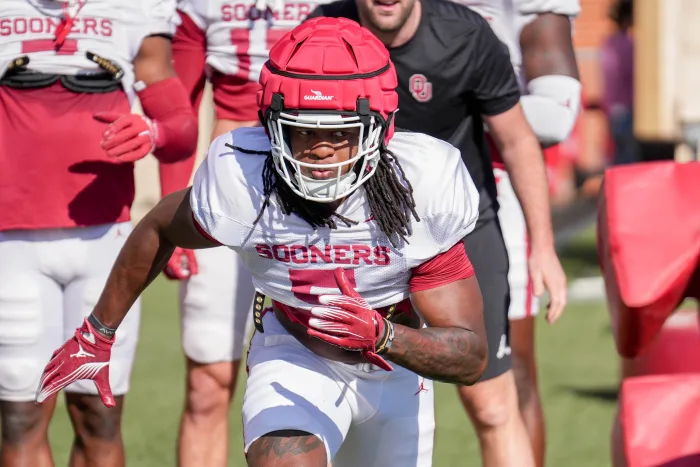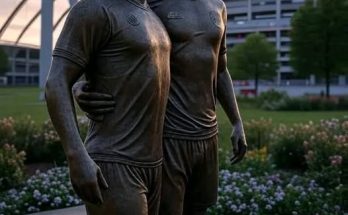The Oklahoma Sooners’ defense has undergone a significant transformation since Brent Venables took over as head coach, and one of the most exciting developments is the creativity with which he has approached player positioning and scheme design. Venables, known for his defensive acumen, has emphasized flexibility and versatility in his defensive personnel. As a result, the Sooners’ defense has become increasingly unpredictable and difficult to decipher, giving them an edge over their opponents. The infusion of new talent and the utilization of players in unique roles have not only enhanced Oklahoma’s defensive capability but have also allowed them to create a defensive system capable of adapting to a variety of offensive styles.
When Venables arrived in Norman, the Sooners’ defense had long been a point of concern for the program. Despite producing talented players, they had struggled to maintain consistency and effectiveness, particularly against high-powered offenses in the Big 12. Venables, with his background as a defensive coordinator at Clemson, set out to instill a more aggressive, multiple-defense scheme that could confuse and disrupt opposing offenses. He wasn’t content with simply plugging in players into predefined roles but instead sought to develop a defensive unit that would keep offenses guessing, changing looks and matchups as needed.
One of the key elements of Venables’ defense is the ability to use players in multiple roles, allowing them to attack offenses from a variety of angles. This requires a versatile roster with athletes capable of adjusting to different positions and responsibilities depending on the situation. The Sooners’ recent additions to the defense have given them the ability to experiment and take advantage of mismatches, further adding to the unpredictability of their scheme.
The linebacker corps is a prime example of how Oklahoma has used its new additions to create a dynamic defense. The arrival of talented recruits and transfers has given the Sooners an influx of athleticism and depth at linebacker, which has allowed them to utilize these players in hybrid roles. Instead of simply relying on traditional inside or outside linebacker positions, Venables has put his players in positions where they can rush the passer, drop into coverage, or even play along the defensive line. This flexibility makes it difficult for opposing offenses to anticipate where the pressure will come from, and it opens up a host of possibilities for Oklahoma’s defensive playcalling.
Take, for instance, the use of a player like Jaren Kanak. Kanak, a linebacker with a strong athletic profile, was initially known for his speed and ability to cover ground sideline-to-sideline. However, under Venables, Kanak has been used as more than just a typical linebacker. At times, he is asked to blitz from the edge, putting pressure on the quarterback, while other times he might be stationed as a middle linebacker, reading the play and covering the pass. His versatility has made him a key weapon in Venables’ scheme, and his ability to excel in multiple positions has given Oklahoma a significant advantage in creating confusion for opposing quarterbacks and offensive coordinators.
In addition to Kanak, the arrival of transfers like Dasan McCullough has further bolstered the linebacker group and expanded the defensive playbook. McCullough, a former four-star recruit from Indiana, has the size and speed to make an impact at several different spots on the field. His ability to rush the passer, cover running backs out of the backfield, and line up as an outside linebacker gives Venables even more options for how to attack opposing offenses. Having players like McCullough allows Venables to create defensive packages that can be tailored to the strengths and weaknesses of the opposing offense, providing a distinct edge in terms of creativity and adaptability.
Perhaps the most striking element of Oklahoma’s defense under Venables, however, is the creativity he has applied to the defensive line. Traditionally, defensive lines are built around a strong pass rusher or two, but Venables’ defense thrives on movement and variation. The Sooners have brought in multiple players capable of lining up in various positions along the defensive line, creating a situation where offensive linemen are constantly adjusting to new looks and mismatches. Rather than having a set number of players in specific roles, Venables’ defensive line can move and shift, making it difficult for opposing offensive lines to predict their next move.
The addition of players like Ethan Downs and Rondell Bothroyd gives the Sooners even more flexibility upfront. Downs, a standout defensive end, has the ability to rush the passer, but he is also capable of lining up inside as a defensive tackle, where his strength and quickness allow him to collapse the pocket from the interior. Bothroyd, a transfer from Wake Forest, is another example of the versatility that Venables is seeking in his defensive players. Bothroyd has the ability to rush from the outside, but he has also been deployed as an interior lineman at times, where his agility and explosiveness make him a nightmare for opposing quarterbacks. This level of fluidity in positioning is a hallmark of Venables’ approach, ensuring that Oklahoma’s defensive line can wreak havoc from any angle.
The defensive backs, meanwhile, have seen an infusion of talent that adds another layer to Oklahoma’s defensive creativity. Venables has been able to use his cornerbacks and safeties in multiple roles, often using them to disguise coverages or create pressure from the secondary. The Sooners’ secondary has the ability to switch from zone to man-to-man coverage on the fly, keeping quarterbacks on their toes and preventing offenses from settling into a rhythm. With players like Gentry Williams and Key Lawrence, who have the skill sets to cover a variety of routes and even blitz from the safety position, Oklahoma’s defensive backs provide yet another tool in Venables’ arsenal for keeping offenses guessing.
Incorporating so many players with different skill sets allows Venables to continuously tweak and adjust the defense, something that has become especially important in today’s college football landscape. As offenses become more complex and creative, defensive coordinators must also evolve, and Venables has demonstrated a keen ability to do just that. By making full use of the talent available to him, he has turned Oklahoma’s defense into a flexible, dynamic unit that can be molded to fit the situation at hand.
Furthermore, the development of Oklahoma’s defense under Venables isn’t just about putting players in unique positions; it’s also about fostering a culture of understanding and intelligence on that side of the ball. Venables’ defense is as much about mental preparation as it is about physical prowess. The ability to read and react to offenses, adjust to changing situations, and exploit weaknesses is a result of both excellent coaching and high-level player engagement. With such a versatile group of athletes, Venables has been able to foster a defense that is constantly evolving and able to stay a step ahead of opposing offenses.
As Oklahoma continues to add more talent on the defensive side of the ball, the creativity within the defense will only increase. Players like Kanak, McCullough, and Williams will continue to develop, becoming even more proficient in their ability to perform multiple roles. With Venables at the helm, Oklahoma’s defense is poised to become one of the most innovative and unpredictable units in college football, creating chaos and disruption for opposing offenses throughout the season.
In conclusion, the Oklahoma Sooners’ defense under Brent Venables is a textbook example of how creativity and versatility can elevate a team to new heights. By utilizing players in unique positions and constructing a defensive system that is fluid and adaptable, Venables has given Oklahoma a distinct advantage. With the continued infusion of talent, the Sooners will only become more unpredictable, and their defense will be an even greater force in the competitive landscape of college football.



